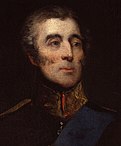General election of 1830
|
|
|||||||||||||||||||||||||||||||||
|---|---|---|---|---|---|---|---|---|---|---|---|---|---|---|---|---|---|---|---|---|---|---|---|---|---|---|---|---|---|---|---|---|---|
|
|||||||||||||||||||||||||||||||||
|
|
|||||||||||||||||||||||||||||||||
|
All 658 seats in the House of Commons 330 seats needed for a majority |
|||||||||||||||||||||||||||||||||
|
|||||||||||||||||||||||||||||||||

Colours denote the winning party
|
|||||||||||||||||||||||||||||||||
|
|||||||||||||||||||||||||||||||||
The 1830 United Kingdom general election, was triggered by the death of King George IV and produced the first parliament of the reign of his successor, William IV. Fought in the aftermath of the Swing Riots, it saw electoral reform become a major election issue. Polling took place in July and August and the Tories won a plurality over the Whigs, but division among Tory MPs allowed Earl Grey to form an effective government and take the question of electoral reform to the country the following year.
The eighth United Kingdom Parliament was dissolved on 24 July 1830. The new Parliament was summoned to meet on 14 September 1830, for a maximum seven-year term from that date. The maximum term could be and normally was curtailed, by the monarch dissolving the Parliament, before its term expired. This election was the first since 1708 to cause the collapse of the government.
The Tory leader, at the time of the 1830 election, was the Duke of Wellington. He had been Prime Minister since 1828.
The previous Parliament had been unstable, with both principal parties fractured. During the 1826-1830 Parliament, there had been four Tory Prime Ministers. The Earl of Liverpool, who had been Prime Minister since 1812, was forced by ill health to retire in 1827.
George Canning, who had been Leader of the House of Commons under Liverpool, became Prime Minister in early 1827. The High Tories, led by the Duke of Wellington and Robert Peel, refused to serve in his government. Canning invited a section of the Whigs, including Lansdowne to join a coalition ministry with the Canningite faction of the Tory Party. Other Whigs, like Earl Grey, remained in opposition. Some Whigs like Viscount Althorp adopted a neutral attitude to the government.
...
Wikipedia



